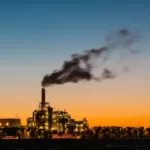Ontario’s Minister of Energy and Mines (the Minister) yesterday delivered a keynote speech at the Ontario Energy Conference setting out Ontario’s energy priorities, linking new supply and infrastructure directly to the province’s industrial strategy and economic growth. This bulletin briefly summarizes the key takeaways of the Minister’s speech.
Integrated Energy Plan as roadmap. The Integrated Energy Plan (IEP) was described as Ontario’s “gold star” roadmap for generation, transmission, distribution, and storage. The Minister noted that the backdrop of rising unemployment in Ontario is new generation development, with the IEP underpinning jobs, competitiveness, and industrial growth.
Nuclear as a nation-building project. Ontario is proceeding with the first of four small modular reactors (SMRs) at Darlington, which has been identified as a “nation-building” initiative by the federal government. The SMR program is projected to create 18,000 construction jobs, with 80 cents of every dollar spent remaining in Canada. The Minister highlighted the economic scale of large nuclear, with a potential 10,000 MW of new capacity at Port Hope, estimated at adding $235B to Canada’s GDP along with new job creation. The Minister emphasized that there is no economic growth without net new nuclear, supporting Canada as a leading clean energy economy and positioning Ontario as leading the world on SMR.
Hydro, Transmission and Storage. The Minister noted that new hydro, transmission, and storage projects are being advanced, with First Nations leadership central to future baseload supply. Four new transmission lines have been announced and were described as the largest one-time investment in a generation and essential to moving new generation to load centres. The Minister also emphasized that storage will be critical alongside nuclear and hydro.
LT2 procurement and competition. The IESO’s Long-Term 2 (LT2) procurement was highlighted as good for customers, as competition is expected to reduce prices by up to 30%. The Minister emphasized the IESO’s role as forward-looking and central to procurement and system planning.
IEP Natural gas policy statement. The Minister noted that for the first time, Ontario has issued a natural gas policy statement as part of the IEP, positioning gas as an “insurance policy” for reliability and customer choice. The Minister reaffirmed Ontario’s commitments to reducing emission, noting that Ontario continues to have one of the cleanest grids in the world – currently 86% non-emitting, targeting 99% by 2050. The Minister also linked natural gas to geopolitics, noting that Canada must continue to develop its own supply and put ratepayers first, while also emphasizing the environment.
Distributed Energy Resources (DERs) and efficiency. The Minister noted that Ontario is scaling up its $10.9B energy savings program, with an expanded energy savings plan expected this fall. The Minister indicated that existing programs have delivered 30% bill reductions and supported 6,000 MW of DER participation, but that the province needs to get out of the way of DER adoption to put customers in control of their energy.
Local distribution companies (LDCs) and standardization. The Minister noted the financial challenges facing many LDCs, and suggested a need for increased standardization and policy alignment to ensure LDCs can play their role in delivering on Ontario’s energy agenda.
Federal government. The Minister called on the federal government to provide clarity on its clean energy Investment Tax Credits, ensure a more nimble Impact Assessment Act regulatory regime that avoids duplication, and provide increased support for critical energy projects in Ontario to mitigate tariff risks from the U.S. and China.
For further information or to discuss the contents of this bulletin, please contact Lisa DeMarco at lisa@resilientllp.com.


